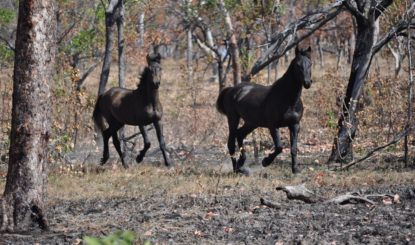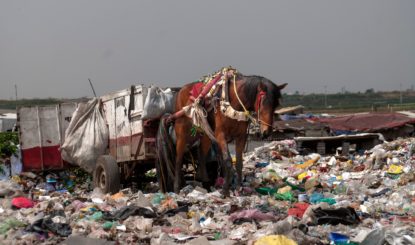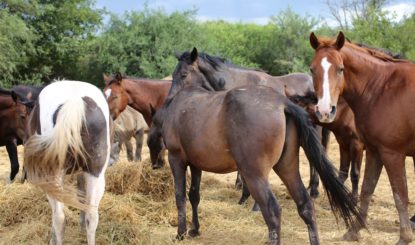Observations on the Access Road to Bonrook
Anyone traveling to Bonrook drives about five kilometers from the Stuart Highway to the Homestead – the first four kilometers on asphalt, the rest on a simple dirt road. When I ask, “What did you see on the way?” most people answer, “Nothing.” But those who keep their eyes open discover an astonishing variety of wildlife – some only present during certain seasons.
Feathered Neighbors
I am especially pleased when I spot the rare and endangered Hooded Parrots (Psephotus dissimilis) during the rainy season. They nest in large termite mounds, always facing west, which offers better protection from bushfires that usually come from the east.
The Bowerbird (Ptilonorhynchus brevirostris) is also active. I often see its intricately decorated nests in the dense undergrowth along the roadside. The male does all the work to impress and attract a female.
As the rainy season approaches, elegant Brolga Cranes (Grus rubicunda) arrive with their families. They stay until the rains fully set in, then move deeper into the bush.
In the early dry season, the Australian Bustard (also called Bush Turkey, Ardeotis australis) appears daily. I often see males proudly strutting along the road in search of a mate.
A rare and special sighting is the Emu (Dromaius novaehollandiae). Despite their size and appearance, emus are usually shy, but if threatened, they can become surprisingly fast and aggressive. It is always unforgettable to watch one of these majestic birds in the wild.
Reptiles Along the Roadside
During the warmer months, I occasionally encounter the highly venomous Northern Brown Snake (Pseudonaja nuchalis), which is inactive during the cool dry season. Once nearly wiped out by the toxic cane toad, their populations are now recovering.
The Frilled-neck Lizard (Chlamydosaurus kingii) is also becoming more common. It dashes across the road or sits quietly on tree trunks. Like the snake, it was almost wiped out by the cane toad but is now making a good recovery.
In the small streams along the entrance road, I sometimes spot the rare Mertens’ Water Monitor (Varanus mertensi). Smaller than the Sand Monitor but equally fascinating, it is now classified as a vulnerable species – another victim of the cane toad.
Curious Dingoes and Hopping Marsupials
Early in the morning, I often see dingoes sniffing along the roadside in family groups. On quiet nights, I hear their howls from the homestead – sometimes from kilometers away. It’s quite the cacophony that perfectly captures the vastness of this landscape.
During the dry season, I need to drive carefully: wallabies often gather on the road, usually in family groups. It’s especially heartwarming to spot a joey in its mother’s pouch.
Occasionally, I also see kangaroos – though less frequently. The species here is the Antilopine Kangaroo (Macropus antilopinus). They are smaller than the Red Kangaroos of central Australia but well adapted to the open spaces along our road. With their slender build and long legs, they are excellent jumpers that move effortlessly across the terrain, displaying impressive speed.
Encounters with Brumbies, Water Buffaloes and Wild Cattle
The only non-native animals present along Bonrook’s roadside are brumbies, water buffaloes and wild cattle. Brumbies are visible year-round – in family groups or bachelor mobs. During the rainy season, newborn foals are a particularly joyful sight. When I slowly pass an alpha stallion, he often puffs up dramatically – flaring his nostrils and proudly raising his head, as if to say, “I’m the boss here!”.
During the rainy season, groups of up to ten water buffalo (Bubalus bubalis) appear. They love to wallow in the mud along the streams beside the road. The bull usually keeps his distance from the herd and demands extra caution when passing, as he can be unpredictable.
Wild cattle also roam the area year-round, mostly in small groups. Although not as aggressive as buffalo, I still watch them closely – especially the old, outcast bulls that stroll along slowly and imposingly.
Driving Slowly Pays Off
Every trip reveals new tracks, movements or animals. Driving too fast here not only causes you to miss the beauty of nature but also risks animal lives. So please: drive slowly and watch carefully – it’s well worth it!


